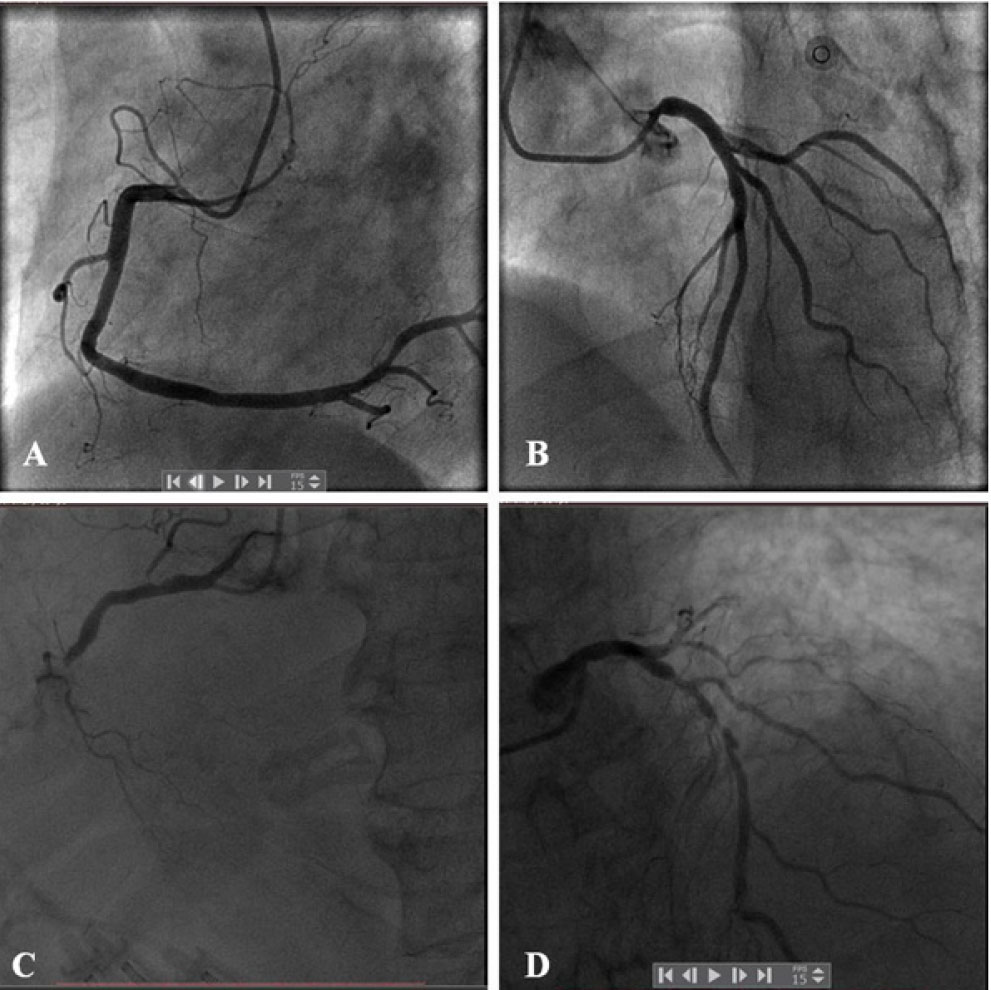Volume 114, Nº 6, June 2020
DOI: https://doi.org/10.36660/abc.20190201
ORIGINAL ARTICLE
Chemotherapy-Related Anatomical Coronary-Artery Disease in Lung Cancer Patients Evaluated by Coronary-Angiography SYNTAX Score
Qian Yang
Yundai Chen
Hai Gao
Jianzhong Zhang
Juan Zhang
Mingjie Zhang
Jing Jing
Pingjun Zhu
Hao Zhou
Shunying Hu

Figure 1 – SXscore of coronary artery based on CAG. Representative CAGs of a patient with SXlow (SXscore = 2; A–B) and a patient with SXhigh (SXscore = 38; C–D).
Abstract
Background: Chemotherapy-related coronary artery disease (CAD) is becoming an emerging issue in clinic. However, the underlying mechanism of chemotherapy-related CAD remains unclear.
Objective: The study investigated the association between chemotherapy and atherosclerotic anatomical abnormalities of coronary arteries among lung cancer patients.
Methods: Patients undergoing coronary angiography (CAG) between 2010 and 2017, who previously had lung cancer, were examined. Risk factors associated with CAD and information about lung cancer were evaluated. We assessed coronary-artery abnormalities by SYNTAX score (SXscore) based on CAG. In logistic-regression analysis, we defined high SXscore (SXhigh) grade as positive if ≥22. Data were analyzed through descriptive statistics and regression analysis.
Results: A total of 94 patients were included in the study. The SXscore was higher in the chemotherapy group than in the non-chemotherapy group (25.25, IQR [4.50–30.00] vs. 16.50, IQR [5.00–22.00], p = 0.0195). The SXhigh rate was greater in the chemotherapy group than in the non-chemotherapy group (58.33% vs. 25.86; p = 0.0016). Both univariate (OR:4.013; 95% CI:1.655–9.731) and multivariate (OR:5.868; 95% CI:1.778–19.367) logistic-regression analysis revealed that chemotherapy increased the risk of greater SXhigh rates. Multivariate stepwise logistic-regression analysis showed the risk of more severe anatomical CAD is increased by chemotherapy as a whole by 5.323 times (95% CI: 2.002–14.152), and by platinum-based regimens by 5.850 times (95% CI: 2.027–16.879).
Conclusions: Chemotherapy is associated with anatomical complexity and severity of CAD, which might partly account for the higher risk of chemotherapy-related CAD among lung cancer patients. (Arq Bras Cardiol. 2020; 114(6):1004-1012)
Keywords: Coronary Artery Disease/physiopathology; Lung Neoplasms/drug therapy; Lung Neoplasms/complications; Propensity Score; Score Syntax; Angioplasty/methods; Risk Factors.















